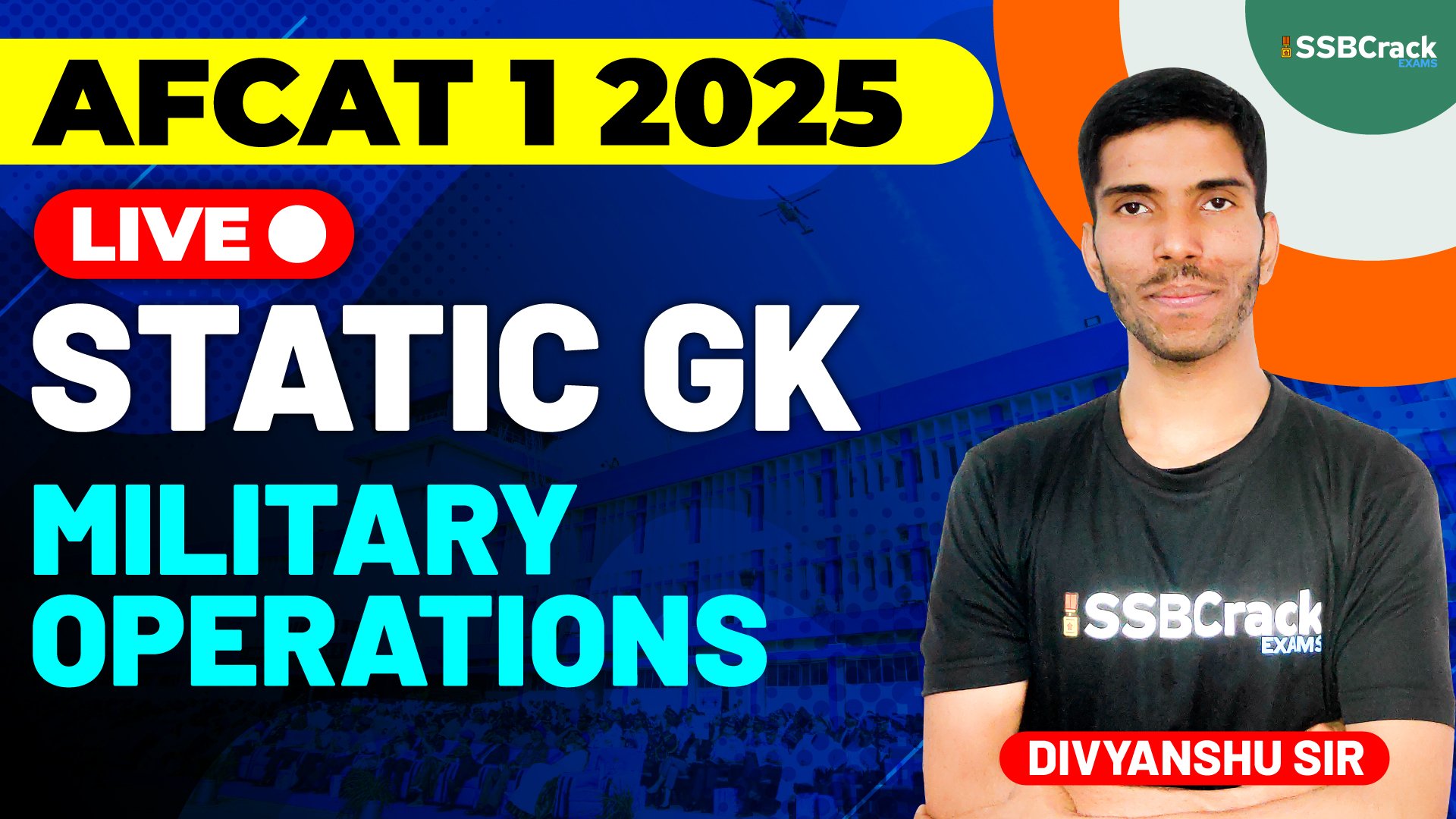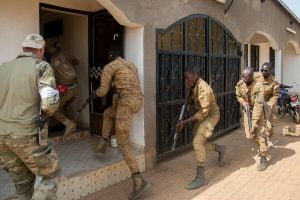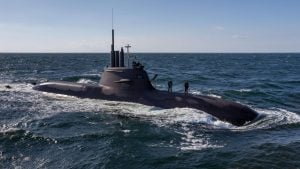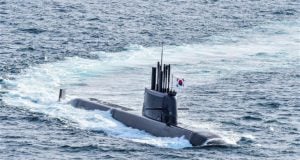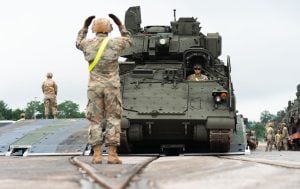For aspirants preparing for AFCAT 1 2025, understanding India’s significant military operations is crucial. These operations not only reflect the strength of the Indian Armed Forces but also showcase the country’s ability to respond to various challenges ranging from defense to humanitarian assistance. This article provides an overview of the most important military operations conducted by India that every AFCAT candidate should be familiar with.
AFCAT 1 2025 Military Operations
Why Study Military Operations?
Military operations play a significant role in AFCAT as they are directly linked to the country’s defense strategy, historical conflicts, and peacekeeping efforts. Knowledge of these operations helps in understanding India’s military capability and its evolving defense doctrines. Many AFCAT questions revolve around important operations, making them an essential topic for preparation.
Key Military Operations of India
1. Operation Vijay (1999)
- Conflict: Kargil War
- Objective: Eviction of Pakistani infiltrators from the Kargil sector in Jammu and Kashmir.
- Key Features: Operation Vijay was launched to regain Indian territory occupied by Pakistani soldiers disguised as militants in Kargil, Ladakh. The operation demonstrated India’s strategic military capabilities and involved joint operations by the Indian Army and Air Force. The Kargil conflict ended in India’s favor with the successful recapture of all occupied positions.
2. Operation Meghdoot (1984)
- Conflict: Siachen Conflict
- Objective: Capture of the Siachen Glacier.
- Key Features: This operation was launched to gain control of the strategic Siachen Glacier, located in the northern part of the Kashmir region. It was one of the world’s highest battlefield operations, where the Indian Army preemptively secured the glacier from Pakistani forces. Despite harsh weather conditions, India continues to maintain a stronghold over the Siachen region.
3. Operation Trident (1971)
- Conflict: Indo-Pakistani War of 1971
- Objective: Naval strike on Pakistan’s Karachi harbor.
- Key Features: Operation Trident was a successful naval offensive conducted during the 1971 Indo-Pak war. The Indian Navy attacked Pakistan’s Karachi harbor, inflicting significant damage on its naval and fuel reserves. This operation is celebrated as Navy Day in India on December 4 every year, marking a decisive naval victory.
4. Operation Cactus (1988)
- Objective: Prevention of a coup in the Maldives.
- Key Features: When mercenaries attempted to overthrow the Maldivian government, India responded by launching Operation Cactus. The Indian Armed Forces swiftly deployed paratroopers to Malé, the capital of the Maldives, and successfully neutralized the insurgency. This operation demonstrated India’s readiness to protect its neighboring countries and its influence in the Indian Ocean Region (IOR).
5. Operation Blue Star (1984)
- Objective: Removal of armed militants from the Golden Temple in Amritsar.
- Key Features: Operation Blue Star was launched to neutralize armed militants who had occupied the Golden Temple, a sacred site for Sikhs. While the operation successfully eliminated the militants, it also led to significant political and social consequences, including the assassination of Prime Minister Indira Gandhi.
6. Operation Poomalai (1987)
- Conflict: Sri Lankan Civil War
- Objective: Air-drop humanitarian aid to Tamil civilians in Jaffna, Sri Lanka.
- Key Features: During the Sri Lankan civil war, Tamil civilians in Jaffna were under siege by the Sri Lankan government. India launched Operation Poomalai to provide humanitarian aid to the affected civilians. The Indian Air Force successfully dropped food and medical supplies, showing India’s humanitarian approach toward regional conflicts.
7. Operation Parakram (2001-2002)
- Conflict: Post-Parliament Attack Tensions
- Objective: Military mobilization in response to the 2001 Parliament attack.
- Key Features: After the terrorist attack on the Indian Parliament in December 2001, India launched Operation Parakram to mobilize its military forces along the India-Pakistan border. This operation was meant to deter further aggression from Pakistan. Though a full-scale war was averted, Operation Parakram highlighted India’s readiness to respond to acts of terrorism.
8. Operation Raahat (2015)
- Objective: Evacuation of Indian and foreign nationals from Yemen during the civil war.
- Key Features: With Yemen in the midst of a civil war, India launched Operation Raahat to safely evacuate its citizens and other foreign nationals. The Indian Armed Forces, particularly the Indian Navy and Air Force, played a crucial role in airlifting and transporting over 5,000 people to safety. This operation showcased India’s capacity for humanitarian assistance and non-combatant evacuation operations.
9. Operation Sankat Mochan (2016)
- Objective: Evacuation of Indian nationals from South Sudan during the conflict.
- Key Features: As civil war broke out in South Sudan, India launched Operation Sankat Mochan to evacuate its nationals stranded in the conflict zone. The Indian Air Force conducted this successful operation, rescuing Indian citizens from the war-torn region. It highlighted India’s growing role in global humanitarian efforts.
10. Operation Safed Sagar (1999)
- Conflict: Kargil War
- Objective: Air operations during the Kargil conflict.
- Key Features: Operation Safed Sagar was the air component of the Kargil War. The Indian Air Force played a critical role in providing aerial support to ground troops, targeting enemy positions at high altitudes. Fighter jets such as Mirage 2000 and MiG-21 were extensively used in this operation. This marked the first time the IAF was involved in direct combat after the 1971 war.
Key Takeaways for AFCAT 1 2025 Preparation
- Focus on Names and Objectives: Pay special attention to the names of operations, their objectives, and the outcomes. These are commonly asked in multiple-choice questions.
- Joint Operations: Some operations involve more than one branch of the armed forces. Knowing which forces were involved is crucial.
- Humanitarian Operations: India’s military also conducts non-combat operations, such as humanitarian assistance and disaster relief. These are increasingly being asked in AFCAT.
- Regional Focus: Be familiar with operations conducted in India’s neighborhood (Maldives, Sri Lanka, etc.), as they reflect India’s strategic influence in the region.
Tips for Studying Military Operations
- Make Flashcards: Use flashcards to memorize the names, dates, objectives, and outcomes of key operations.
- Stay Updated: Follow news outlets and defense journals for updates on recent operations or any new military engagements.
- Mock Tests: Take regular quizzes that focus on defense operations to assess your understanding and improve recall.
Conclusion
Military operations form a significant part of India’s defense history and continue to play a crucial role in shaping the country’s military strategy. For AFCAT 1 2025 aspirants, a thorough understanding of these operations is essential. Knowing the objectives, key players, and outcomes of each operation will not only help in clearing the GK section but also provide a deeper insight into India’s defense prowess.
Prepare well, stay consistent with your studies, and make sure to revise these operations regularly to ace AFCAT 1 2025!
